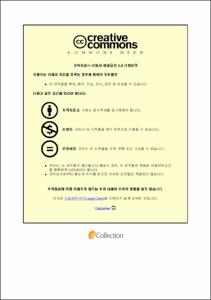산업유산 재생을 통한 도시경관 형성 특성에 관한 연구
- Abstract
- The purpose of this study to suggest directions for urban regeneration by analyzing the characteristics in the cases of Industrial Heritage since the second half of the 20th century and improvement methods for urban landscape formation. Based on the advanced cases of industrial heritage by type, the industrial heritage used as strategies for urban regeneration have been affected on the development behavior and uses depending on the location or type. The findings of the analysis are presented as follows;
First of all, with analysing the cases of industrial heritage by building type, it has largely symbolic at the nodes of the city. Also it has been used as a variety of public spaces. As for street type which has the characteristics of location that passed through cities, making a walking environment for urban linkage is emphasized and the development is shown to combine cultural elements. And district type is used as an eco-friendly city park or a large-scale cultural complex with various public facilities in order to prevent a slump. So the improvement method is mainly featured that the system is built for walking environment in the district and for public.
Secondly, the visibility of urban landscape formation was captured to be the construction of a new landscape using its location characteristics, and there are active improvements such as demolishing the surrounding environment or vertically expanding the building type. Functionality has been shown to create a pleasant walking environment to enjoy landscape or to provide a viewing facility. It applies mainly by providing a pleasant environment through overall improvement due to the characteristics of the street type. Historicity can be felt for the future beyond preservation. It is strongly shown by the ratio through the expansion of the type of building. Culturality presents as a public space for local use and environment, and an active improvement about cultural space is seen through most cases.
As stated above, the elements of the utilization of industrial heritage that must be given priority depending on the type of facilities from the viewpoint of landscape formation are different from each other.
Therefore, in order to effectively utilize the industrial heritage as a strategic base for urban renaissance, it is desirable that active improvement plans be implemented based on the characteristics of landscape formation described above.
- Issued Date
- 2019
- Awarded Date
- 2019. 2
- Type
- Dissertation
- Keyword
- Industrial Heritage Urban Regeneration Industrial Heritage Types Landscape Formation Elements
- Publisher
- 부경대학교
- Affiliation
- 부경대학교 대학원
- Department
- 대학원 건축학과
- Advisor
- 송대호
- Table Of Contents
- 1. 서 론 1
1.1 연구의 배경 및 목적 1
1.2 연구의 범위 및 방법 3
2. 이론적 고찰 6
2.1 산업유산의 개념 및 유형 6
2.1.1 산업유산의 개념과 범위 6
2.1.2 산업유산의 유형 분류 11
2.2 산업유산과 도시재생 14
2.2.1 도시재생의 개념과 특성 14
2.2.2 도시경관과 산업유산의 활용 22
2.3 선행연구 및 분석의 접근 틀 29
2.3.1 선행연구의 고찰 29
2.3.2 분석을 위한 구성요소 설정 33
3. 시설유형별 산업유산의 활용 경향 분석 42
3.1 조사 개요 42
3.2 시설유형별 산업유산 활용 경향 44
3.2.1 건물유형의 산업유산 활용 44
3.2.2 가로유형의 산업유산 활용 52
3.2.3 지구유형의 산업유산 활용 60
3.3 시설유형별 산업유산 활용 경향 비교 68
4. 산업유산의 경관형성 특성 분석 70
4.1 경관형성을 위한 시각성ㆍ기능성 분석 70
4.1.1 시각성(Visibility) 분석 70
4.1.2 기능성(Functionality) 분석 76
4.2 경관형성을 위한 역사성ㆍ문화성 분석 80
4.2.1 역사성(Historicity) 분석 80
4.2.2 문화성(Culturality) 분석 84
4.3 종합 분석 88
5. 결 론 93
참고문헌 95
- Degree
- Master
- Files in This Item:
-
-
Download
 산업유산 재생을 통한 도시경관 형성 특성에 관한 연구.pdf
기타 데이터 / 34.31 MB / Adobe PDF
산업유산 재생을 통한 도시경관 형성 특성에 관한 연구.pdf
기타 데이터 / 34.31 MB / Adobe PDF
-
Items in Repository are protected by copyright, with all rights reserved, unless otherwise indicated.